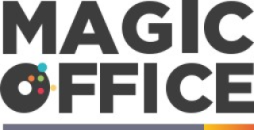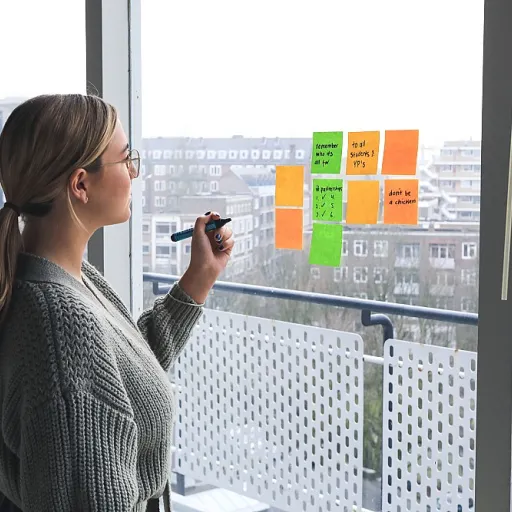
Understanding the Need for Time Tracking in Architecture
Why Accurate Time Tracking is Crucial in Architectural Practices
In the fast-paced world of architecture, managing time efficiently is not just beneficial—it's essential. The intricate nature of architecture projects, coupled with the constant demand for creativity and precision, necessitates a reliable method to track hours spent by architects and design teams. Incorporating effective time tracking measures allows firms to closely monitor how much time is allocated to each project phase, enabling better project management and enhancing overall productivity. Architectural firms often juggle multiple projects simultaneously, making it critical to streamline processes and ensure that no billable hours are lost. By utilizing robust time tracking tools like Deltek or TimeCamp, businesses can track time expended on each task in real time, leading to more accurate project assessments and resource allocations. These tools not only aid in invoicing but also provide insights into project costs, assisting firms in crafting more competitive pricing plans. Furthermore, tracking hours plays a key role in measuring productivity across the team. Firms that have successfully implemented these tools often report enhanced capacity to manage projects, thus improving their ability to deliver on time and within budget. This functionality can be a considerable advantage for both large a&e firms and small business operators aiming to optimize their operations without incurring excessive expenses. For those keen on testing such software, many options provide a free trial period to start free before committing to a monthly plan. Through enhanced efficiency-integration tools, firms can further combine time tracking with other project management or accounting software, providing a holistic view of project progression and financial health. This integrated approach ensures that every hour worked translates into productivity, further solidifying the importance of adopting time tracking mechanisms in architectural practices.Key Features of Effective Time Tracking Software
Key Characteristics to Look For
When selecting a time tracking tool for architectural firms, there are several important features to consider that can help manage projects efficiently and track time spent accurately. Software designed for architects should cater to the unique demands of A&E firms and enhance project management practices.- Real-Time Tracking: One of the most valuable aspects of effective tracking software is the ability to provide real-time insights into hours spent on each project. This can greatly impact how business decisions are made and help in identifying bottlenecks in project management.
- Integration Capabilities: Look for software that allows seamless integration with existing accounting software and other project management tools. This ensures that all functions related to time expense and billable hours are centralized, saving time and reducing errors.
- Flexibility and Scalability: As firms grow, their requirements for software will evolve. A tool like Deltek, known for catering to A&E firms, is an example of a solution that scales as your business expands.
- Pricing Transparency: Understanding the pricing plans is crucial. Options that offer a free trial can be advantageous for small businesses wanting to experience the software's capabilities before committing. A clear pricing structure helps in budgeting effectively.
- Accessibility: In today's mobile-driven world, it is beneficial to have tools that can be accessed on various devices. This flexibility ensures that architects and team members can track their projects even when they are on the move.
Benefits of Implementing Time Tracking Tools
Advantages of Incorporating Time Tracking Solutions
Implementing time tracking software offers significant advantages for architecture firms, streamlining processes and enhancing productivity. As architects and project managers aim to optimize their workflow, these tools provide indispensable support. Here are some notable benefits:- Accurate Time Management: Time tracking tools, such as Timecamp or Deltek, empower architects to monitor the time spent on each project in real time, ensuring that all hours are accounted for accurately.
- Boost in Productivity: By analyzing the tracked hours, firms can identify inefficiencies and implement strategies to enhance productivity, ultimately leading to better project management.
- Improved Financial Tracking: These tools facilitate precise tracking of billable hours, which is crucial for accurate invoicing and financial management in A&E firms and architecture firms.
- Enhanced Team Collaboration: Tracking software offers visibility into team members' workflows, allowing for better coordination and resource allocation across projects.
- Seamless Integration with Other Software: Many tracking tools integrate with project management and accounting software, creating a cohesive system for managing projects and expenses. Firms can often start free trials on these platforms to evaluate their benefits.
Challenges in Adopting Time Tracking Software
Overcoming Hurdles in Time Tracking Implementation
Implementing time tracking tools in architectural firms introduces specific challenges that need thoughtful consideration. While the advantages are substantial, these hurdles can only be effectively navigated with an understanding of both human and technical aspects. One of the common obstacles is the resistance from team members who might view time tracking tools as intrusive. Many architects and creative professionals fear that these tools could stifle creativity by imposing rigid structures and time constraints. Transparent communication about the purpose of time tracking, which is to enhance project management and not to micromanage, can help mitigate these concerns. Encouraging a culture of trust and openness can significantly ease the transition. Another critical challenge lies in selecting the appropriate time tracking software. With a myriad of options available, ranging from free tools to comprehensive solutions like Deltek, firms often struggle to find the right fit for their business needs. It's essential to evaluate software based on factors such as user-friendliness, ability to integrate with existing systems, and pricing plans. Moreover, offering a free trial period is an effective way to assess the suitability of a tool without financial commitments. Technical difficulties pose another layer of complexity. Integration with existing management software, such as accounting software or project management systems, can be rocky. To counter this, investing in software that offers seamless integration and real-time tracking capabilities is crucial. Architecture firms must also consider the tech literacy levels of their teams and provide adequate training sessions to ensure smooth adoption. Time tracking projects require continuous evaluation and adaptation. Regular feedback from staff on how the systems impact their work can highlight areas of improvement and lead to best practices. It is worth it, however, as the ability to precisely track billable hours and manage projects efficiently will ultimately benefit the firm's bottom line. Ultimately, addressing these challenges can lead to more accurate time expense tracking and improved project outcomes. By understanding and planning for these barriers, architectural firms can effectively implement time tracking solutions and enjoy the numerous benefits they bring.Case Studies: Success Stories from New Zealand Firms
Real-World Success with Time Tracking Tools
In the dynamic world of architecture, managing projects efficiently is crucial. New Zealand firms have increasingly turned to time tracking software to streamline their operations. These tools not only help track time but also enhance project management and improve overall business efficiency.
Deltek: A Game Changer for A&E Firms
One notable success story comes from a mid-sized architecture firm in Auckland. They adopted Deltek, a robust time tracking and project management software, to manage their projects more effectively. The firm reported a significant reduction in time spent on administrative tasks, allowing architects to focus more on design and client interaction. Deltek's comprehensive features, including real-time tracking and detailed reporting, enabled the firm to optimize their billable hours and improve profitability.
TimeCamp: Boosting Efficiency in Small Businesses
Another example is a small business in Wellington that implemented TimeCamp. This software offered a free trial, which allowed the firm to explore its capabilities without initial financial commitment. TimeCamp's intuitive interface and flexible pricing plans made it an ideal choice for the firm. By tracking time accurately, the business could better manage projects and allocate resources efficiently, leading to improved client satisfaction and increased revenue.
Overcoming Challenges with the Right Tools
While the adoption of time tracking software can present challenges, such as resistance from team members or integration with existing systems, these New Zealand firms have demonstrated that the right tools can overcome these hurdles. By selecting software that aligns with their specific needs, these firms have successfully enhanced their project management processes and achieved greater operational efficiency.
Choosing the Right Time Tracking Software for Your Firm
Finding the Best Fit: Navigating the Selection Process
Selecting the right time tracking software for your architecture firm involves balancing multiple factors, including pricing, features, and the unique needs of your team. As you evaluate various options, consider the following aspects:- Feature Set Alignment: Ensure the software has features that directly align with your firm’s needs, such as project management integration, real-time tracking, and billable hours management. Tools like Deltek and Timecamp offer comprehensive features tailored for architecture firms which can be crucial in this regard.
- Ease of Use: The software should be intuitive, allowing your team to track time effortlessly without a steep learning curve. A user-friendly interface can significantly enhance efficiency, making it easier to manage projects effectively.
- Scalability: As your architecture firm grows, your time tracking software should be able to scale with your business. Assess whether the tool can handle an increasing number of projects and hours tracked without performance issues.
- Pricing Plans: Compare various pricing plans and evaluate them against your budget. Some tools offer a free trial, permitting you to explore their functionalities before committing financially.
- Integration with Existing Systems: Consider how well the new software integrates with your existing accounting and management software. Seamless integration is vital for maintaining streamlined operations and accurate time expense reporting.
- Customer Support and Training: Evaluate the availability of customer support and training resources to help your team get up to speed quickly, as well as ongoing support for any issues that arise.












